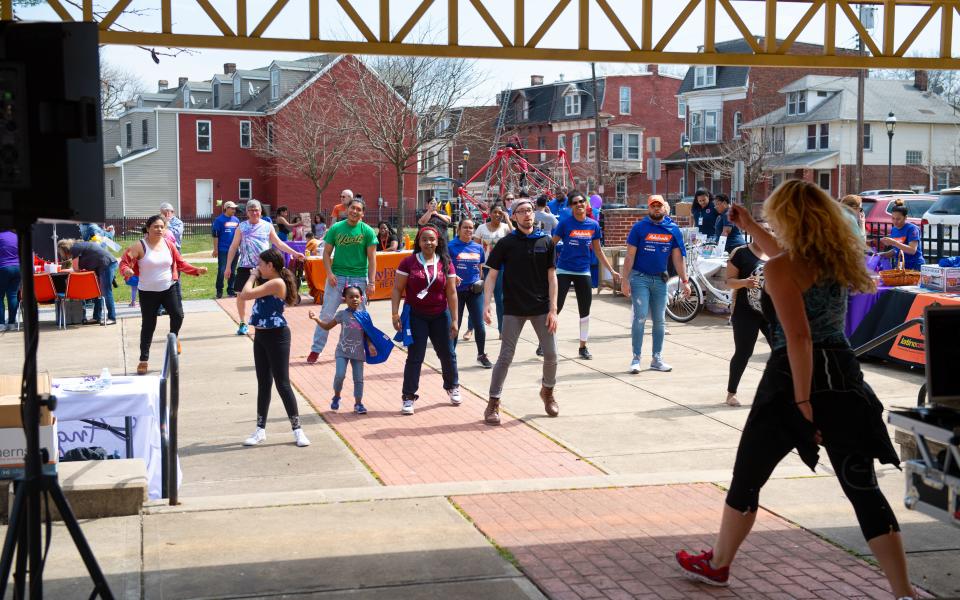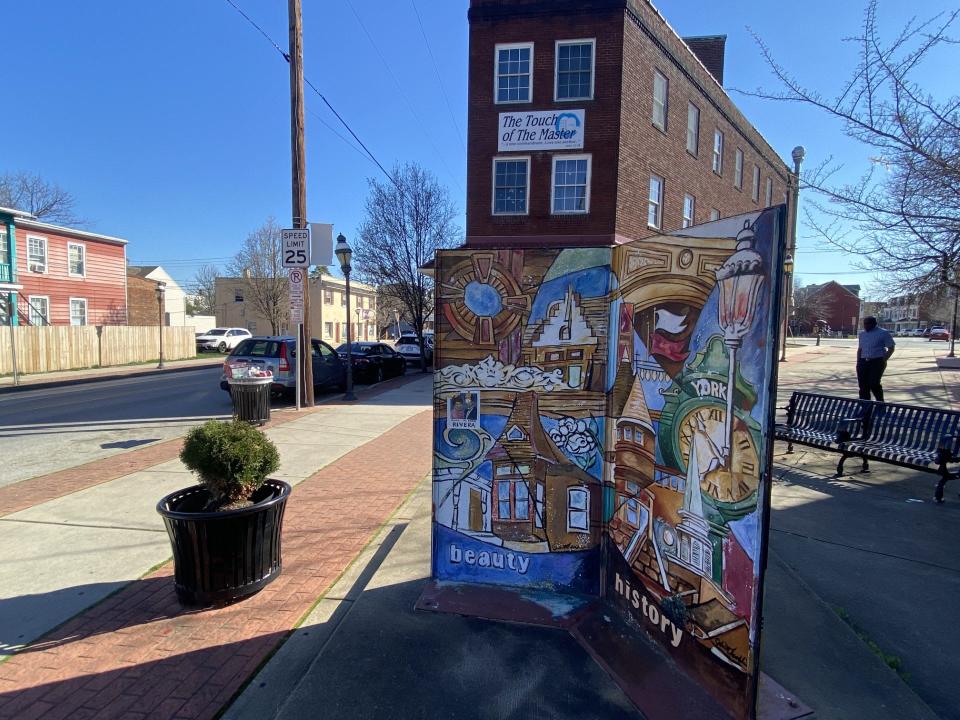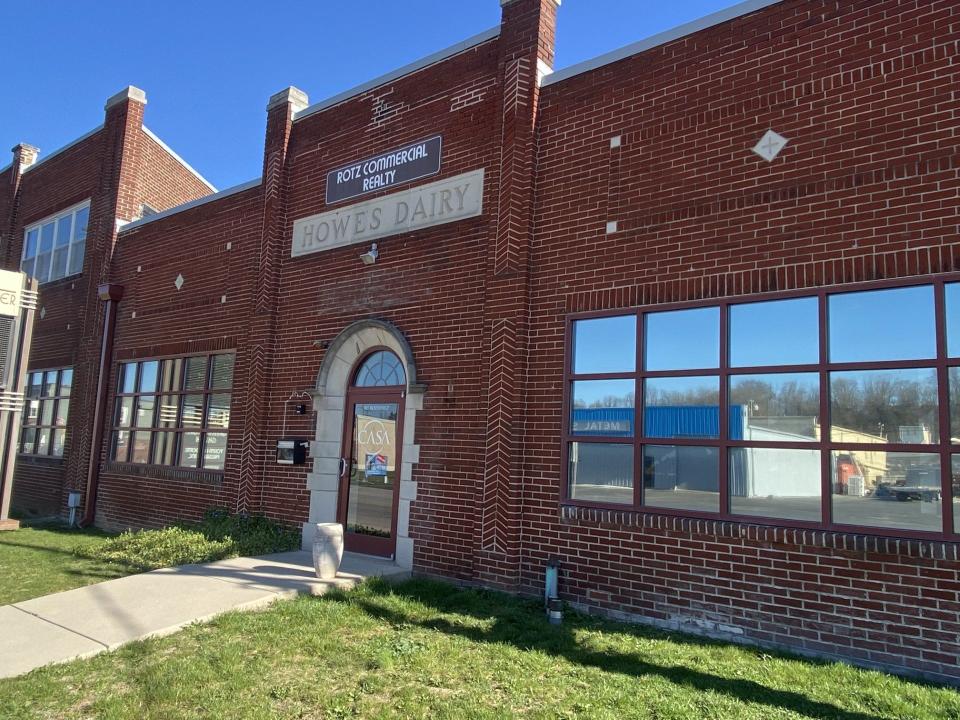But this group, formed in mid-March 50 years ago to explore community problems and to present solutions, did not act like a group thinking only in the short term.
This soon-to-be Spanish Council of York got to work and started a long play for community improvement that continues in the Latino community today.
A regular newspaper column in English and Spanish started appearing in The York Dispatch in April. One column told about eight Latino nominees put up for positions on the city’s Human Relations and Safer Streets committees. The committee met with the Community Progress Council, the county’s leading anti-poverty group, to develop a program to benefit Latinos.
Further, members prepared for a meeting with York Mayor John Krout. And the committee was among a coalition that brought forth concerns to the Community Progress Council about the need for a storefront Spanish-speaking education and counseling center in Red Lion. It also joined a coalition protesting York Health Corp.’s proposed closing of a medical center in Red Lion.
Committee members also were planning a visit to a Spanish-speaking center in Harrisburg to gather ideas for one in York.
By December, the committee had earned permanent status. The Spanish Council of York elected a slate of officers: Nathaniel De Baca, president; Ruth Amoros, vice president; Teresa del Rio, secretary; Roberto Alicea, treasurer; Delma Rivera, assistant secretary; and the Rev. Jose Bibiloni, assistant treasurer. Board members added to this group of community leaders were Lourdes Rubio, Leticia Perez, Eulogio Gonzales, Ramon Rivera, Luis de Jesus, Teddy Lopez and Hector Vera Ponce.
These leaders were invested in giving identity to the Latino community as an integral part of the larger York community. Also, they were tasked with making the local Latino community aware of its rights and obligations as residents of the city and to conduct a community planning process to study and resolve community needs and to act as a mediator between the Spanish and American cultures in order to preserve the dignity of both.
So, 30 years after Latinos arrived in York County, this group of residents, for which Spanish was their first language, mustered the numbers and clout to form an advocacy organization. That year, 1974, could be seen as a hinge point in York County’s Latino history, a story that continues today in a county in which about 1 out of every 12 residents are Latino.

Migrants aided in wartime
In the World War II era, scores of Latinos, many from Puerto Rico, were recruited to work in York County’s fields and orchards. County farmers, experiencing wartime labor shortages, also employed German prisoners of war based in Stewartstown and fruit pickers from Jamaica. They also followed a past practice of recruiting Polish workers from Baltimore.
Within a decade, farms were becoming so large and mechanized that farm families couldn’t sustain the crops, and supplemental local labor was in short supply.
Every summer, migrant farm workers arrived in York County from at least two places. Squads of men from Puerto Rico traveled in the summer after working in the sugar cane fields, and Florida field crews arrived in families after working in the citrus groves.
In 1954, an estimated 600 workers were projected to work in York County’s fields, orchards and canneries. According to one news account: “Because the wages are tied to piecework, there is little loafing.”
The Puerto Ricans were known to bring along cooks. One cannery found that the “Puerto Rican idea of good food is a long way from the American idea — and it has imported three cooks from the island … to keep homesickness from settling in their crews’ stomachs.”
By the end of the 1950s, agriculturally mighty York County remained a major employer of migrant workers. The average seasonal workers who came to harvest crops stood at 200 migrants from Florida and other parts of the South and 400 Puerto Ricans who stayed and worked, living in 60 camps.
Latinos were counted in sufficient numbers by the late 1950s to prompt the Roman Catholic bishop in Harrisburg to appoint a priest to St. Patrick’s Church in York to minister to this growing group. The Rev. Andre Melusky came on board in 1959 and served through 1962.
Meanwhile, St. Mary’s Catholic Church provided space on South George Street for Latino families to worship: Centro Hispana Catolico. Membership grew, and in 1979, Cristo Salvador’s parish was established on East South Street under the pastorship of the Rev. Bernardo Pistone. They worshipped in the former quarters of Annunciation Greek Orthodox Church, which had moved to a new home in Leader Heights.
Paulita Rios was an organizer of the new congregation and then a soup kitchen in 1983. Forty years later, that kitchen is known as Our Daily Bread on South George Street.


In the late 1960s, Latino and Black leaders, facing common discriminatory acts, joined forces. York College’s Peter Levy writes: “York’s black residents also partnered with newly created Spanish rights groups to protest a wide array of inequities.”
Jose Hernandez, leader of the newly formed Progressive Spanish American Council, joined the Rev. Leslie Lawson of Small Memorial AME Zion Church in demanding the abolition of the city’s “police court” and the appointment of interpreters for Spanish-speaking defendants in court, not accounted for in York’s legal system. The council also joined the local NAACP in alleging a large chain of food stores was engaged in unfair labor practices.
Hernandez died at age 38 in 1971, and three years later, the Spanish Council replaced the earlier Progressive Council.
The year after the Spanish Council was formed, a Spanish Center was organized, and Nayda Pophal was named its director. It was located in the Community Progress Council quarters on the third floor of the Rupp Building on York’s Continental Square
The center served as a gathering place of Spanish-speaking people and served as the go-to organization for referrals to services in the community. The center also offered Spanish lessons to people in the community.
In 1976, Latino community leaders looked for a stand-alone center. At the time, the center operated out of the Community Progress Council’s new office in the old Noell school building on East College Avenue.
Delma Rivera – who with her husband, Edwin, raised money for the center – gave this assessment of the Latino community to a newspaper reporter: “Things are different now from 16 years ago. We are more accepted by the community.” The formation of the Spanish Council two years before had made a difference.
The story began in regard to York County’s Latino people: “For the most part they are uneducated and poor. They come to this country seeking a better life. What they encounter here is a cold climate, a foreign language, strange customs, run-down apartments in city slums and no jobs. … But they agree that despite these problems life is improving for the Spanish population in the York area.”
Finally in March 1977, the Spanish American Center opened at 236 S. Queen St., its first free-standing headquarters, though it remained a delegate agency to the Community Progress Council.
The center later moved to the former Emerson Building and Supply at 200 E. Princess St. And in 2008, another move would take it across the street to 225 E. Princess St., where it would be named after pioneering Latino leader Jose Hernandez, Jose E. Hernandez Centro Hispano.


Developing Latino talents
Today, the 200 block of East Princess Street bears the name of community leaders Edwin and Delma Rivera. A colorful mural tells about the Latino community’s culture and history.
A bilingual church meets in the former Spanish American Center at 200 E. Princess St.
The city’s Renaissance Park in that block offers Latinos and other people of all ages recreational opportunities. All this can be found in and around the South Queen Street neighborhood where early Latinos settled in York.
The Spanish American Center – Jose E. Hernandez Centro Hispano – merged with CASA in York in 2018.
CASA, an organization that advocates for Latinos and others in Pennsylvania, Maryland and Virginia, moved into the former Hernandez Center. In 2023, CASA occupied another address, a welcome center and space for education and workforce development, in renovated space in the former Howe’s Dairy building on Roosevelt Avenue.
The Spanish Council and Spanish American Center also live on via another organization. The nonprofit Latino Unidos seeks to build trust and serve as a liaison for Latino interests in the community as well as enhance the image of Latino groups in the York area. The group’s goal is to inspire Latinos to develop their talents and increase representation in leadership positions in the community. That’s a mission strikingly similar to the Spanish Council of York when it formed 50 years ago.
And there is continuity in this community. Latino Unidos membership include second- and third-generation members of pioneering Latino families in York County.
Sources: York Daily Record/Sunday News files, York Dispatch files, Peter Levy’s “The Great Uprising.”
More about Latinos
This story is adapted from a detailed timeline published on WitnessingYork.com, a digital initiative operated by Jamie Noerpel and James McClure.
Jim McClure is a retired editor of the York Daily Record and has authored or co-authored nine books on York County history. Reach him at jimmcclure21@outlook.com.
This article originally appeared on York Daily Record: York County PA Latino community organized 50 years ago



